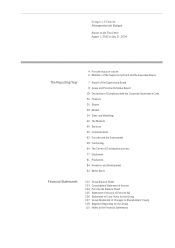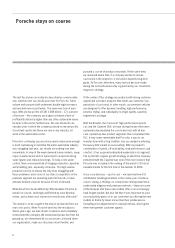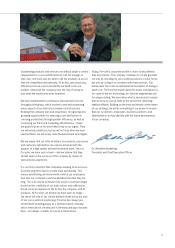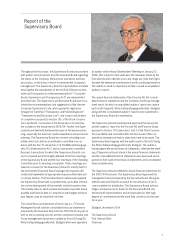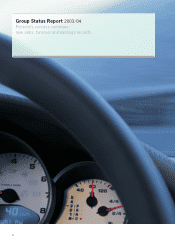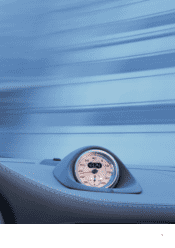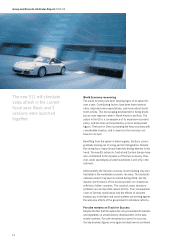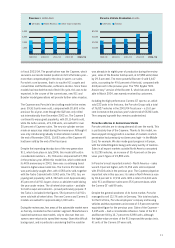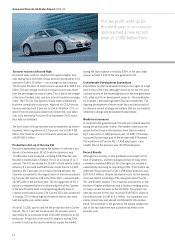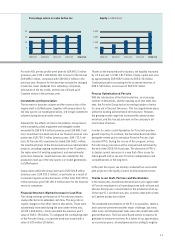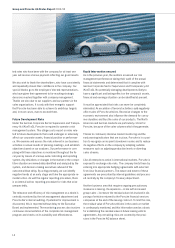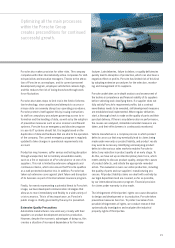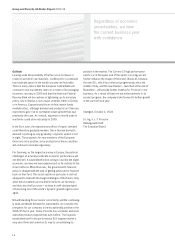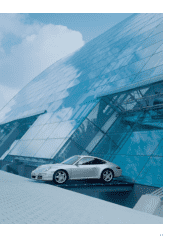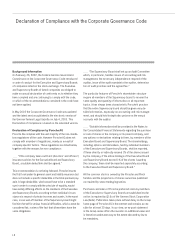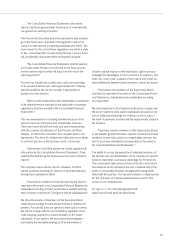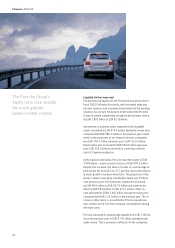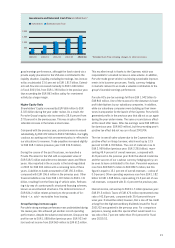Porsche 2003 Annual Report Download - page 17
Download and view the complete annual report
Please find page 17 of the 2003 Porsche annual report below. You can navigate through the pages in the report by either clicking on the pages listed below, or by using the keyword search tool below to find specific information within the annual report.
13
Porsche AG’s pre-tax profits went down to EUR 843.0 million
(previous year: EUR 1.042 billion). Net income for the AG was
EUR 488.0 million, compared with EUR 660.0 million in the
previous year. Reasons for the decrease include the changed
model mix, lower dividends from subsidiary companies,
elimination of the tax credit, and the one-off build-up of
Cayenne stocks in the previous year.
Investments and Depreciation
The increase in business volume and the construction of the
engine plant in Zuffenhausen, together with preparations for
the new sports-car model generations, led to high investment
volumes during the year under review.
Adjusted for the effects of initial consolidation, Group invest-
ment in property, plant, equipment and intangible assets
amounted to EUR 575.4 million (previous year EUR 580.3 mil-
lion). Investment in leased assets at our financial services com-
panies was EUR 759.7 million (previous year: EUR 712.5 mil-
lion). At Porsche AG, investments totaled EUR 568.1 million;
the investment plans of the AG involved various rationalization
projects, including ongoing modernization of the IT systems,
the replacement of existing equipment, and environmental
protection measures. Investment was also needed for the
production start-up of the new sports-car model generations
in Zuffenhausen.
Depreciation within the Group went up to EUR 524.8 million
(previous year: EUR 392.2 million), in particular as a result of
increased Cayenne production levels. Of this total, EUR 235.6
million (previous year EUR 182.0 million) were for the financial
services companies.
Financial Structure: Marked Increase in Cash Flow
The strong earnings performance of Porsche was impres-
sively reflected in its extended cash flow. This key ratio in-
cludes changes to the other reserve allocations. These were
substantially increased during the year under review and,
at EUR 1.666 billion, clearly exceeded the previous year’s
value of EUR 1.390 billion. To safeguard the continued growth
of the Porsche Group, a corporate bond was issued with a
value of 625 million US dollars.
Thanks to the improved profit situation, net liquidity improved
by 33.6 percent, to EUR 1.817 billion. Equity capital also rose
by approximately EUR 568.9 million to EUR 2.323 billion.
Continued prudent accounting led to increased reserves of
EUR 2.560 billion, an increase of EUR 472 million.
Process Optimization at Porsche
With the introduction of the third model line, an increasing
number of derivatives, and the opening up of new sales mar-
kets, the Porsche Group had an increasing number of tasks
to carry out in the past few years. This has largely taken place
within the existing administrative infrastructure. However,
the growing model range has increased the administrative
workload, and this has put pressure on the company’s ad-
ministrative structure.
In order to create a solid foundation for Porsche’s positive
growth trajectory to continue, the Executive Board decided
during the review year to introduce Porsche Process Opti-
mization (PPO). During the course of this program, all key
Porsche Group processes will be analyzed and optimized by
the end of the 2005/06 fiscal year. The objective of PPO is
to deploy current resources in a way that offers scope for
future growth and so secures Porsche’s independence and
competitiveness in the long term.
In the past fiscal year, we already conducted two successful
pilot projects in the Quality Control and Development areas.
Thanks to our Staff, Partners and Stockholders
In the review year, exceptional demands were once again made
of Porsche employees in all operating areas both at home and
abroad. Activity was concentrated on the production start-up
of the new 911, but there was also a need to deal with increas-
ed Cayenne production volume.
The worldwide presentations of the 911 to journalists, dealers,
and customer presented another major challenge, but many
other sales and development tasks were also undertaken with
great enthusiasm. The Executive Board wishes to express its
gratitude to everyone involved. As a token of our appreciation,
as in previous years, all employees paid according to negotia-
Percentage return on sales before tax
1999 ⁄ 00 2000 ⁄ 01 2001 ⁄ 02 2002 ⁄ 03 2003 ⁄ 04
20
15
10
5
Equity in million Euro
1999 ⁄ 00 2000 ⁄ 01 2001 ⁄ 02 2002 ⁄ 03 2003 ⁄ 04
2,400
1,800
1,200
600


